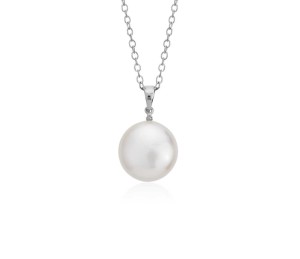 A natural pearl (often called an Oriental pearl) forms when an irritant works its way into a particular species of oyster, mussel or clam. As a defense mechanism, the mollusk secretes a fluid to coat the irritant. Layer upon layer of this coating is deposited on the irritant until a lustrous pearl is formed.
A natural pearl (often called an Oriental pearl) forms when an irritant works its way into a particular species of oyster, mussel or clam. As a defense mechanism, the mollusk secretes a fluid to coat the irritant. Layer upon layer of this coating is deposited on the irritant until a lustrous pearl is formed.
A cultured pearl undergoes the same process. The only difference is that the irritant is a surgically-implanted mother-of-pearl bead or piece of shell. The core is, therefore, much larger than in a natural pearl. As long as there are enough layers of nacre to result in a beautiful, gem-quality pearl, the size of the nucleus is of no importance to beauty or durability.
Fine natural pearls are quite rare. The Persian Gulf has always been the source of the finest natural saltwater pearls. Other sources are the waters around Sri Lanka, Australia, Japan, Mexico, Panama, Venezuela and the Micronesian Islands. Japan is the major source of cultured saltwater pearls, with Burma and Australia contributing to world supply. Freshwater pearls occur naturally, but in recent years a strong cultured pearl industry has sprung up for this product. Freshwater pearls are generally very irregular in shape, with a puffed rice appearance being the most common. Freshwater pearls occur in many colors and are often treated to produce more evenly-colored strands. These may be found in lovely peaches, lavenders, pinks and blues as well as white. The most popular colors for round pearls are whites, creams and pinks. Silver, black and gold are gaining new interest.
Since subtle differences in quality can make large differences in beauty (and price), it is important to select your Jewelry from a professional who can guide you honestly and ethically in your purchase.
